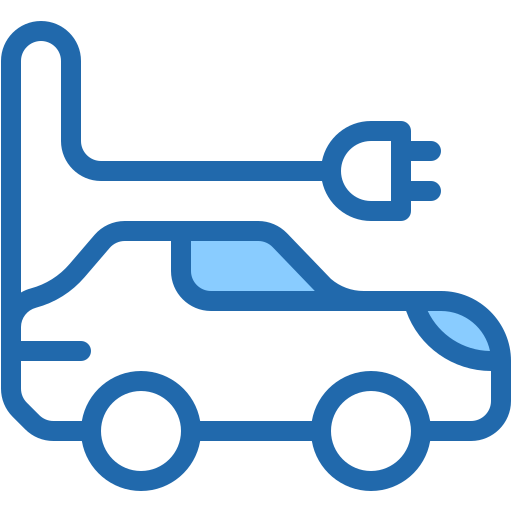Fog Light Market To Reach $5953.4 Million by 2032

According to the data given by Metastat Insight, the global fog light market is a great reflection of how the safety technology in cars influences the daily travel and transport. The scenario of a late-night drive through a foggy road where suddenly visibility drops can be very common. During such times, the safety of the driver and passengers relies on the light that can go through the moisture instead of one that gets reflected. The use of fog lights has become a necessity for safe driving, reducing the fear of accidents with a quicker response from drivers and other road users. The consumer awareness of safety standards and the demand for better lighting from both passenger and cargo vehicles are the main factors driving the market for specialized lighting solutions. The changing habits of people in moving from one place to another combined with the installation of intelligent features in cars to help drivers stay safe are the reasons why this part of automotive lighting is slowly becoming popular again.
Industry Context
The present modes of transport encounter frequent weather hurdles such as fog, haze, snow, dust, and moisture from the sea. These situations cause a scattering of the regular headlight beams and producing glare. Light manufacturers’ responses are the creation of mellow lighting systems for the toughest visibility situations. Car manufacturers are balancing the use of light directed closer to the road surface so as to eliminate reflection and to increase the visibility of road markings, pedestrians, and even other cars as safer illumination solutions.
The changing of consumer and regulatory expectations are leading to a rethinking of the automotive lighting strategies. The existence of fog lights is made possible by the strict safety standards, hence the car industry comprising luxury and regular brands has come to see improved reputation as a result of their compliance. Even end-users who make demands of more than just basic features from contemporary cars can feel the benefits of this indirectly. The aftermarket segment also perceives the addition of such lighting systems as a money-making endeavor, as more and more drivers are using factory-installed lighting to
How the Technology Works / Value Proposition
Fog-dedicated lighting creates a beam of light with a specific angle and position that is low and wide, which falls beneath the fog layer, not lighting the water particles in the air. This feature makes it more difficult to see the edges of the lane, the guardrails, and the surface of the road. The light is projected in a wider and lower manner with the fog lighting system as compared to standard headlights that project light straight ahead. The wider and flatter distribution pattern of fog lighting reduces glare for the vehicles coming from the opposite direction.
Modern versions apply high-standard materials and optical engineering to create and maintain a consistent flow of light in water-heavy areas. LED lighting modules are gaining more and more attention for their long life, less power usage, and being tough. Corrosive, thermal and vibrational resistant are characteristics that the housing units and lenses possess. For fleets of commercial vehicles the lighting that is reliable will mean less downtime and maintenance scheduling as a whole. In the case of passenger vehicles, the "in" lights lead to the driver being more confident and also easing the travel experience.
The Growth Story / The Technological Evolution
The initial phase of future-oriented lighting adoption was very modest and mainly repetitive in luxury car trims and with some commercial applications. Over time as the technology became already established, the enhanced lensing, modularity, energy-efficient conversion plus hardware and cost-effective integration across not only luxury vehicles but also close to mass market categories became possible. The manufacturing processes improvements like the precision lens molding and the compact LED drivers resulted in slimmer and more aerodynamically shaped lighting assemblies.
Consumer demand for stylistic differentiation has also shaped product development. Manufacturers now offer options with signature light lines and customizable colours within regulatory limits. Integration with smart driver-assistance features further elevates the role of fog-specific lighting. Some systems now connect with sensors that adjust brightness based on ambient conditions or vehicle speed.
Regional and Global Trends
Heaviest and most widespread adoption basically exists in places dominated with heavy and persistent fog, and those with unpredictable weather patterns and high altitudes. Those markets that have the most developed automobile industries generally put a lot of emphasis on high-quality lighting as one of the main factors for road safety and compliance with strict safety requirements. Clusters of local manufacturers cater to the entire process from faster development cycles through rapid prototyping to the cooperation of component suppliers with automakers.
Regions that are experiencing the fastest growth in terms of vehicle ownership are the ones with the greatest future potential. Infrastructure development, increased commercial transport activity, and consumers’ growing concern about safety make it easier for the stronger adoption to take place. The aftermarket players in these areas are saying that the demand for invisibility upgrades is growing, and they do not want extensive involvement in the modification process.
Challenges and Opportunities
Advanced lighting is considered cost-prohibitive for mass-market vehicles, in particular, high-quality lighting systems that are to be the buying decision's main factor. Up to thirty years of LED-based solutions' reduction in lifetime costs are on the negative side; however, the initial installation can in some cases already be higher than that of the older halogen-based units. The technology adoption problems also arise when the glamor seekers try to retrofit lighting into their vintage cars that lack proper housings or are not electrically stable.
Nevertheless, manufacturers are still looking for ways to stand out and keep the market. They are increasingly experimenting with new optical designs, corrosion-resistant materials, and modular wiring systems that not only improve the end product but also the entire process since they make installation easier. The connection with smart mobility infrastructure paves the way for lighting that can communicate with external systems, such as roadside sensors, thus integrating the future. The lighting manufacturers’ collaboration with automotive designers and fleet operators makes the whole process quicker and more efficient, both in terms of designing and deploying.
Why It Matters Now
Growing attention toward sustainable mobility, safety-first transportation planning, and digital transformation in automotive technology highlights the importance of dependable illumination. Weather patterns continue to shift, increasing the frequency of low-visibility driving conditions. Lighting designed specifically for fog becomes not just a feature, but a safeguard supporting modern transportation challenges. Advancements in this space reflect a broader movement toward smarter, safer vehicles.
The global fog light market, outlined through Metastat Insight's perspective, anchors a meaningful transition toward safer road travel and more intuitive vehicle design. As transportation systems evolve, specialized lighting supports confidence on challenging roads and reinforces a future where safety, performance, and innovation align.
Drop us an email at:
inquiry@metastatinsight.com
Call us on:
+1 214 613 5758
+91 73850 57479
 Agriculture
Agriculture
 Aerospace and Defense
Aerospace and Defense
 Automation & Process Control
Automation & Process Control
 Automotive and Transportation
Automotive and Transportation
 Banking & Finance
Banking & Finance
 Biotechnology
Biotechnology
1.png) Chemicals and Materials
Chemicals and Materials
 Consumer Goods
Consumer Goods
 Energy and Power
Energy and Power
 Food and Beverages
Food and Beverages
 Healthcare IT
Healthcare IT
 Information & Communications
Information & Communications
 Manufacturing and Construction
Manufacturing and Construction
 Packaging
Packaging
 Pharmaceuticals
Pharmaceuticals
 Electronics and Semiconductor
Electronics and Semiconductor
 Medical Devices
Medical Devices







 US: +1 3023308252
US: +1 3023308252






